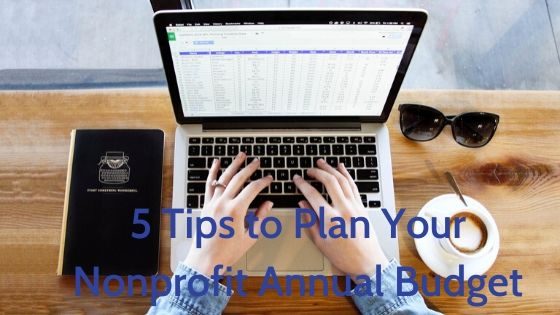Your nonprofit organization’s budget is one of the most essential tools you have to ensure success in the upcoming fiscal year. Not only do you need it to effectively plan how you’ll operate, pay your staff, and maintain functionality, it also serves as a financial mission statement. It shows what you expect to get done in the year ahead.
Your budget is a living document. It’s something that you will use all year long to monitor and manage the financial health of your nonprofit organization as well as use it to keep your board members and donors informed about where the money is going. You’ll refer to it continually to make choices and decisions as well as to reconcile your spending, so you want it to be as accurate and effective as possible. To help, we’re sharing five tips for planning your nonprofit annual budget.
Plan Your Budget by Month
Instead of trying to plan your budget by the year, you need to break it down by month. This allows you to track your spending and revenue progress continually, allowing you to spot issues and make adjustments and realign your numbers before you run into issues.
Additionally, having a monthly budget will allow you to factor timing fluctuations. For example, nearly all nonprofits see a large influx of revenue at the end of the year, while summer months are leaner. Using this information allows you to more effectively plan how to pay expenses during the lean months while managing your high-revenue months for maximum impact.
Begin Your Budget with Fixed Costs
Expenses like rent, utilities, payroll, and supplies are necessities you need to keep your doors open and are also generally stable costs you’ll face each month. Make sure you build these fixed, necessary costs into your budget first, before adding in things like travel, team-building exercises, or other extras that are important, but aren’t essential.
Use Previous Years as a Guide to Your Nonprofit’s Budget
You never want to plan your nonprofit’s budget based on assumed costs unless you really have no other option. Anytime you can work with real numbers and accurate data, the more successful your budget will be.
Unless this is your first year operating your nonprofit organization, you have at least one year of information at your fingertips to help you plan your budget. Using last year’s financial data, or several years’ worth of data, you can spot the trends like we mentioned above – months that consistently have higher or lower revenue, spikes in specific costs, and in general, your spending in specific line items. Also, as you pull information from previous years, leave out one-time expenses or donations that are unlikely to occur again.
Plan Your Income Accurately
As a nonprofit, you’re relying on donations and grants which you know first hand are hard to forecast. Unlike expenses, which are fairly predictable, income is variable and dependent on a variety of factors. However, that doesn’t mean you have to rely solely on guesswork. As we mentioned above, use your previous years’ financial data.
One of the easiest ways is to track your annual growth rate of donations and factor that into your budget while also showing if your nonprofit is successfully increasing donations over a long-term track. Use donation revenue from the current fiscal year (A) and the year before (B). Subtract current fiscal year from the previous year and divide it by this year. Then multiply it by 100 to get the percentage.
Your formula will look like this: A – B = C; C/A x 100
For example: This year’s donations totaled $50,000 and last year’s donations totaled $45,000. 50,000 – 45,000 = 5,000. Then, 5,000 divided by 50,000 equals 0.1, which, multiplied by 100 equals 10 percent growth. Using several years’ worth of data, you can come up with a fairly accurate look at your donation income for the upcoming year.
Separate Your Operational and Capital Budgets
Your operational budget is your main budget that shows how the day-to-day operations will be funded and where the money is coming from and going out.
Your capital budget is your budget for larger, special projects that are unlikely to repeat and are more “goal-based.” For example, if you want to invest in a vehicle specifically for the organization, that is something you’ll want to budget separately for.
Contact Us for Nonprofit Accounting Software for More Accurate Budgeting
At Capital Business, we work with all types of organizations, connecting them with nonprofit accounting software solutions to help them streamline and simplify their bookkeeping and accounting. Instead of having to bounce back and forth between documents and spreadsheets to plan and implement your budget, the right nonprofit accounting software can save you time while helping you build a more accurate budget to guide your organization.
To learn more about our fund accounting software services and how we can help you fulfill your mission with custom design, implementation, training, and support for your software, reach out to us today at (888) 249-6008 or contact us to get started!
